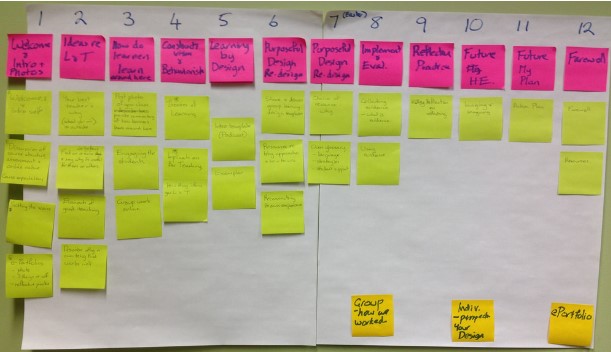1/ Panic?
2/ Wait and Hope?
3/ Start Again?
4/ Call an expert?
You’ve had a website for years, you’ve just updated your website or you’ve just launched your website and are worried that your website is invisible and your customers won’t be able to find it. What can you do, what should you do and what must you do?
Don’t panic, this simple guide will take you through the steps you must take to ensure that Google can find your website in the online jungle, how to make your site visible in Google search and even point the way to creating a website that actually works, rather than just look good. And if all else fails, or you want to shortcut the process – just get in touch and I’ll step in and help out.
How does Google find your site?

Let’s start with Google Search – used by over 90% of people who use a search engine, and that’s around 80% of web users so that’s a lot of people. Google uses software called Robots to scour websites. They send these Robots out on the World Wide Web to find as many websites as possible. They do this by following the links between websites, the Robots look at all of the pages they can find and take all of the information back to the massive Google database of websites, Google calls this database their “Index”.
If you don’t have any links (Backlinks) to your website there is a very real danger that Google will miss your site so you need to install the free Google Analytics website performance tool and sign up to the free Google Search Console. This brings your site to the attention of Google and guarantees a visit from the Robots. However, this does not guarantee that your site will feature in the search results – it needs quality, non-spammy content for that and even this does not guarantee a place ion the top pages. You need SEO for that
How does Google rate your site?

Google wants to understand the purpose of every singe page of your website. To do this, it needs to be able to visit every page. This requires good navigation links on your site AND, if you have a large site, the use of an XML Sitemap so that Google, and all the other search engines, can find all of your pages.
Then, once your pages are in the Index it’s ready to be found. When somebody searches for the services you provide or the products you sell, Google checks its Index for all the words that have been entered in the search box. It very quickly finds all of the pages in the Google Index and applies an algorithm to those results. The algorithm is a set of mathematical tools, instructions and filters that measures every page of each website by looking at more than 200 different signs and signals and the results that most closely match the search terms appear at the top of the Search Results Pages (Page 1) and the poorer the match, the farther down the results the sites appear. And remember only about 50% of search users EVER make it to Page 2 whilst just 10% make it to P3 and beyond. Making P3 a great place to bury bad news.
How do you make your website more visible
First off, make sure your website is fast (if it’s slow people won’t stay so it doesn’t matter how great, or naff, your site is you’ve already hampered your business). Then ensure that it’s full of great relevant content with positive calls to action. Your website MUST be for your site visitors and clients and “created to help users” – that’s directly from Google. This means that each page must be user centred and designed to –
- share information about a topic
- share personal or social information
- share pictures, videos or other forms of media
- express an opinion or point of view
- entertain
- sell products or services
- allow users to post questions for other users to answer
- allow users to share files or download software
- provide something of similar quality

Next up is to install the free Google Analytics tracking software that will help you understand how well your website is performing with your customers. Then authenticate with the Google Search Console, another free tool from Google that will give an insight into what Google thinks of your website.
By doing this, you bring your website to the attention of Google which means they know where to send their Robots to Spider your website and take everything back in to the Google Index.
Now it’s time to build your Google My Business (GMB) profile to help Google understand your NAP, that’s your Name, Address & Phone Number. Once you’ve completed your GMB profile you should register with a number of key web based directory websites.
In the meantime you should be adding fresh, new, relevant and search engine optimised content. That’s because people love new stuff, and so does Google – it informs Google that your website is active and your business is still trading. It also demonstrates your EAT to Google, that’s your Expertise, Authoritativeness, and Trustworthiness. If you are in the financial sector you need to be concerned with Google’s YMYL – Your Money or Your Life.
YMYL content is content that impacts on a reader’s happiness, health, safety or financial stability which, if presented incorrectly, might have a direct, negative, impact on people’s lives
Writing something new about once a month should do it – keep your eyes open for my forthcoming post that’ll be all about writing great, search optimised, content for your website and if you need any help with your content, your SEO or anything else to do with your digital marketing, you know to do.

And not forgetting your Social Media. Every time you create new content don’t forget to share it on your Socials. That helps spread the word and the right posts, of the right content, will attract visits to your website. Google Analytics will show you which platforms are delivering the best traffic. As well as your Socials, don’t forget email and video marketing as well as podcasts.
And if you don’t have the time or need professional help, I am just a call or an email away.
Call me on 01793 238020 or 07966 547146, drop me a line, andy@enterprise-oms.co.uk or book a free 40 minute consultancy session for an informal, free chat about your issues and how I may be able to help.


















